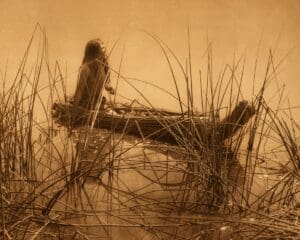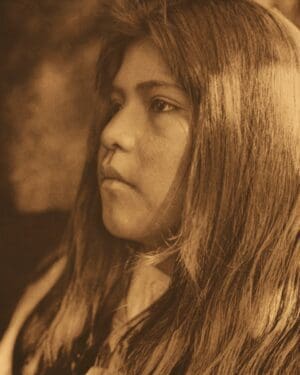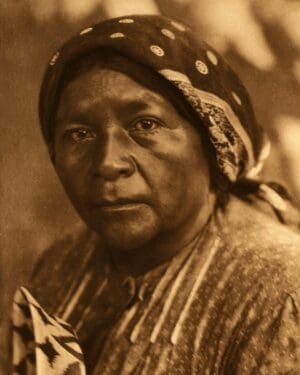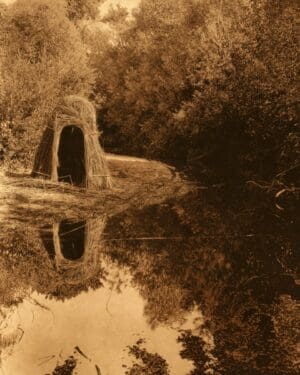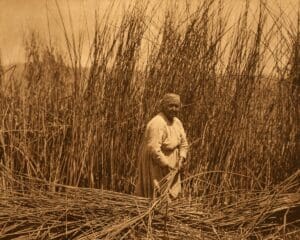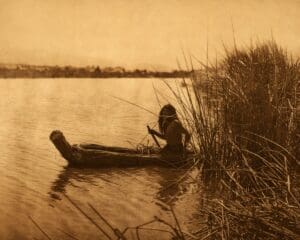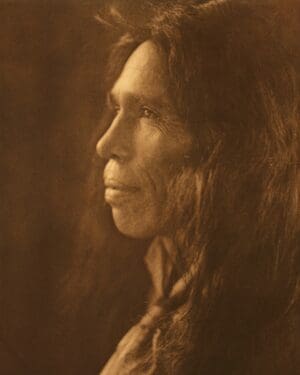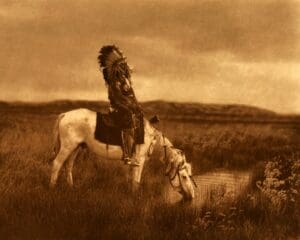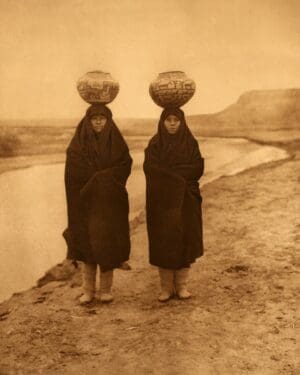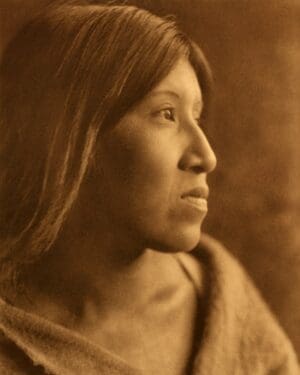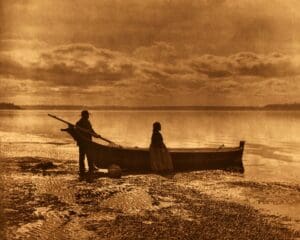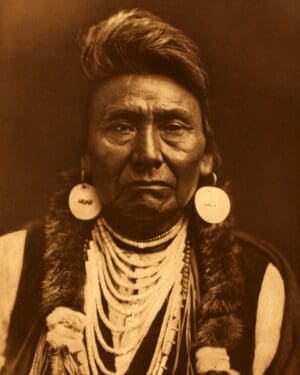Pomo Native Americans
Pomo Indian Photos by Edward S. Curtis
Tribal Summary
Dress
Pomo men ordinarily were stark naked, women wore short, thick kilts of shredded tules, or skirts of deerskin, or, on the coast, shredded redwood-bark. Rabbit-skin robes were used for warmth, and armless, knee-length ponchos of shredded tules were used in rainy weather. Head, feet, and legs were habitually bare. The hair of men was loose or gathered in a knot on the crown of the head, that of women was either unconfined or in a knot at the back of the head. Tattooing is a modern practice. Neatly made ear-pendants consisted of magnesite cylinders and feathers, necklaces of discal clam-shell beads and magnesite cylinders .
Dwelling
In the lake region the Pomo built houses shaped like an inverted circular or elliptical bowl, using for the framework willow poles thrust into the ground and transverse oaken hoops. The thatch consisted of three layers: first, willow or oak shoots applied horizontally; second, a perpendicular course of round tules; third, an upper perpendicular course
of triangular tules. Horizontal poles lashed to the frame held the thatch in place. Some houses were partially subterranean. Where rushes were not available houses were covered with grass, or, even this material wanting, with earth. The Coast Pomo built low, conical houses of redwood slabs converging at the top of a forked central post. The Pomo sweat-house was a pit covered with an approximately conical roof of timbers, brush, grass, and earth.
Food
Acorns made into mush or bread were the most important vegetal food, and they are still used in considerable quantities. Other products of the soil were buckeyes and hazelnuts, berries of laurel and manzanita, huckleberries, elderberries, blackberries, cattail roots, young tule shoots, and the small seeds of various plants. The Coast Pomo considered seaweed an important item. Animals of importance were deer, captured in noose snares or by the drive and ambush; waterfowl, taken in nets and by slings; fish, caught in nets, in traps, and with spears; and roasted grasshoppers, gathered after burning the grass.
Showing 1–9 of 17 results
-
Sale!
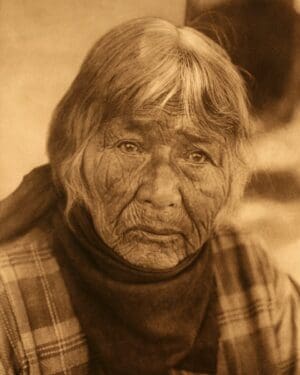
Aged Pomo woman
$18.95 – $120.95 -
Sale!

Burden-basket – Pomo
$18.95 – $120.95 -
Sale!

Canoe of tules – Pomo
$18.95 – $120.95 -
Sale!

Coast Pomo girl
$18.95 – $120.95 -
Sale!

Coast Pomo woman
$18.95 – $120.95 -
Sale!

Fishing camp – Lake Pomo
$18.95 – $120.95 -
Sale!

Gathering tules – Lake Pomo
$18.95 – $120.95 -
Sale!

Hunter – Lake Pomo
$18.95 – $120.95 -
Sale!

Mixed-blood Coast Pomo
$18.95 – $120.95


